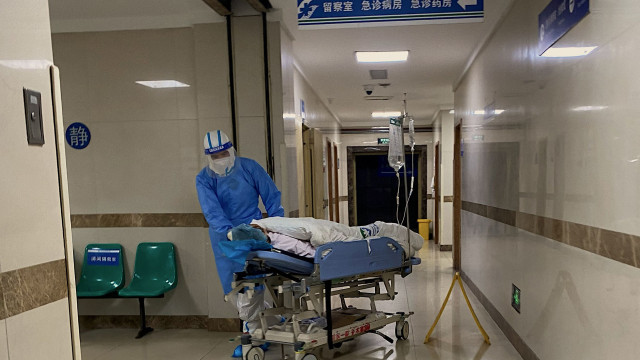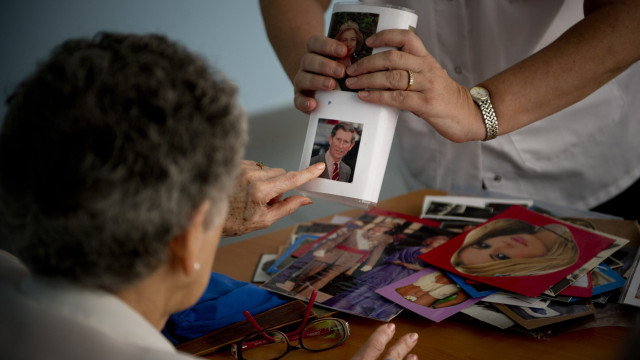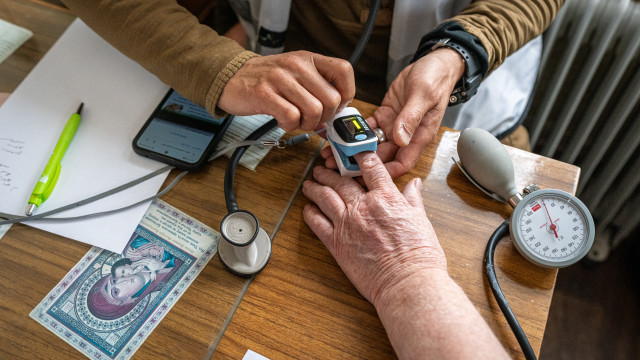

































See Also
See Again
© Getty Images
0 / 34 Fotos
Birth defects are common
- According to the Centers for Disease Control and Prevention (CDC), birth defects affect one in every 33 babies born in the United States each year. That means nearly 120,000 newborns are stricken with birth anomalies annually.
© Shutterstock
1 / 34 Fotos
Births and deaths worldwide
- Globally, about 3-6% of infants are born with a serious birth defect. Furthermore, an estimated 240,000 newborns worldwide die within 24 hours of birth every year due to birth defects, reports the World Health Organization (WHO).
© Shutterstock
2 / 34 Fotos
What is a birth defect?
- Birth defects, also called congenital disorders or congenital malformations, are structural or functional anomalies that occur during intrauterine life—the interval of life between conception and birth.
© Shutterstock
3 / 34 Fotos
When do birth defects form?
- These structural or functional anomalies can affect one or more parts of the body. This includes the heart, brain, feet, and hands. These defects typically form during the first three months of pregnancy, when the baby's organs are forming—a critical stage of development.
© Shutterstock
4 / 34 Fotos
Most common birth defects
- The most common severe birth anomalies are heart defects, neural tube defects, and Down syndrome.
© Shutterstock
5 / 34 Fotos
Heart defects
- Congenital heart defects (CHDs) are the most common type of birth defect. Examples of different types of CHDs include atrial septal defect, coarctation of the aorta, and pulmonary atresia.
© Shutterstock
6 / 34 Fotos
Neural tube defects
- Neural tube defects (NTDs) occur when the neural tube does not close properly. The neural tube is the embryonic precursor to the central nervous system. It effectively forms the early brain and spine. The two most common NTDs are spina bifida (a spinal cord defect) and anencephaly (a brain defect).
© Shutterstock
7 / 34 Fotos
Cystic fibrosis
- Cystic fibrosis is a birth defect that occurs whenever someone inherits the "CF gene" from both of their parents. A disorder such as this is generically described as a single gene defect.
© Shutterstock
8 / 34 Fotos
Down syndrome
- Down syndrome is a genetic disorder usually caused when abnormal cell division results in an extra full or partial copy of chromosome 21. The extra chromosome can cause physical deformities and developmental challenges.
© Shutterstock
9 / 34 Fotos
Clubfoot
- The most common musculoskeletal birth defect is clubfoot. It is a foot abnormality in which the foot turns inward.
© Shutterstock
10 / 34 Fotos
Congenital limb defects
- A congenital limb defect is when an arm or leg doesn't form normally as a baby grows in the uterus. An example is polydactyly, where a foot or hand has more than five digits.
© Shutterstock
11 / 34 Fotos
Absence of limbs
- Congenital limb defects also occur when a part of or the entire arm or leg of a fetus fails to form completely during pregnancy.
© Shutterstock
12 / 34 Fotos
Flat feet
- Everyone has flat feet at birth, and as we grow older the foot should form an arch. But rigid flat foot is the result of either a birth defect or from an abnormal connection between foot bones (tarsal coalition). Pictured left is a normal arch, while on the right is a flat arch.
© Shutterstock
13 / 34 Fotos
Cleft lip/palate
- Other common birth defects include a cleft lip with cleft palate, when the lip doesn't join completely (cleft lip) and the roof of the mouth doesn't join completely (cleft palate).
© Shutterstock
14 / 34 Fotos
Vision disorders
- Eye birth defects are among congenital diseases that result in anatomic abnormalities of the eye and optic nerve, including optic nerve hypoplasia, the leading cause of blindness in infants in the United States. Among rare disorders is aniridia (pictured) in which the iris is absent from the eye, and anophthalmia and microphthalmia.
© Shutterstock
15 / 34 Fotos
Causes
- It's often difficult to identify the exact causes of birth defects. But there are things an expectant mother should be aware of that might increase the chances of having a baby with a birth anomaly.
© Shutterstock
16 / 34 Fotos
Risk factors - Inhaling tobacco, drinking alcohol, or taking certain drugs during pregnancy can increase the chances of having a baby with a birth defect. For example, fetal alcohol syndrome is a condition in a child that results from alcohol exposure during the mother's pregnancy. It can cause brain damage and growth problems.
© Shutterstock
17 / 34 Fotos
Maternal rubella
- Maternal rubella was first identified in 1941 as a cause of birth defects. The rubella virus can infect the fetus at any stage of pregnancy, but defects are rarely noted when this occurs after the 16th week of gestation. The most common abnormalities in the congenital rubella syndrome are hearing loss, mental retardation, cardiac malformations, and eye defects.
© Getty Images
18 / 34 Fotos
Viral infections
- Other maternal infections considered high risk during pregnancy include the Zika virus and cytomegalovirus. The Zika virus is spread by daytime-active Aedes mosquitoes. Cytomegalovirus is a common virus that can be passed on to babies while still in the womb, or caught after birth through breast milk.
© Shutterstock
19 / 34 Fotos
Medications
- Some prescription medications are known to be especially risky to developing fetuses. These include Accutane, prescribed for treating acne, and benzodiazepines, a class of depressant drugs widely prescribed for the treatment of various mental health conditions. Don't stop or start taking any type of medication without first talking with a doctor.
© Shutterstock
20 / 34 Fotos
Genetic disorders
- Having someone in your family with a birth defect likely increases the chances of a newborn entering the world with a birth anomaly. A clinical geneticist or a genetic counselor can impart more information about this particular risk.
© Shutterstock
21 / 34 Fotos
High temperature
- Experiencing a fever greater than 38.3°C (101°F) or having an elevated body temperature due to prolonged heat exposure can endanger an unborn child. Always be proactive in identifying and treating fever.
© Shutterstock
22 / 34 Fotos
Obesity
- Not all birth defects can be prevented, but many are reliant on the mother's lifestyle. Besides alcohol and tobacco, obesity may contribute towards the development of birth defects. Equally, malnutrition in pregnancy is regarded as a risk factor.
© Shutterstock
23 / 34 Fotos
Maternal age
- Maternal age is another risk factor for abnormal intrauterine fetal development. The older the woman, the greater the risk of chromosomal abnormalities, including Down syndrome.
© Shutterstock
24 / 34 Fotos
Preventing birth defects
- Maintaining a healthy lifestyle is vital in lowering the chances of having a baby with a birth defect. A diet rich in fruits and vegetables is always recommended, as is an adequate dietary intake of vitamins and minerals, particularly folic acid.
© Shutterstock
25 / 34 Fotos
Screening, treatment, and care - A useful way to identify those at risk of specific disorders or of passing a disorder onto their children is to undergo a preconception screening.
© Getty Images
26 / 34 Fotos
Ultrasound
- Additionally, ultrasounds are regularly used to screen for Down syndrome and major structural abnormalities during the first trimester, and for severe fetal anomalies during the second trimester.
© Shutterstock
27 / 34 Fotos
Neonatal screening
- Every baby is offered a thorough physical examination soon after birth, a procedure that serves as an important step towards identifying any abnormalities.
© Shutterstock
28 / 34 Fotos
Detecting potential problems
- As a precaution, newborns may be carefully screened for certain metabolic, hematologic, and endocrine disorders, many of which can escape immediate detection. Pictured is a baby undergoing an auditory brainstem response (ABR) test.
© Shutterstock
29 / 34 Fotos
Audio test
- Early screening for hearing loss is essential in order to provide swift correction. It also affords the possibility of an afflicted youngster acquiring better language, speech, and communication skills.
© Shutterstock
30 / 34 Fotos
Early diagnosis
- Early diagnosis of any birth defect makes possible the readiness of therapeutic dietary information, enzyme replacement therapy, and, if necessary, corrective surgery and even organ transplant.
© Shutterstock
31 / 34 Fotos
Living with a birth defect
- Birth defects may cause lifelong disability and illness, and their impact can be considerable. Indeed, having a child with a birth defect can affect the entire family. Fortunately, programs exist to help children who require long-term support, including physical therapy, speech therapy, and occupational therapy.
© Shutterstock
32 / 34 Fotos
Support networks
- And while the needs of individuals with birth defects vary, additional support from family, friends, and the wider community can help those coming to terms with a birth anomaly lead a full and active life. See also: How newborn screening saves lives
© Shutterstock
33 / 34 Fotos
© Getty Images
0 / 34 Fotos
Birth defects are common
- According to the Centers for Disease Control and Prevention (CDC), birth defects affect one in every 33 babies born in the United States each year. That means nearly 120,000 newborns are stricken with birth anomalies annually.
© Shutterstock
1 / 34 Fotos
Births and deaths worldwide
- Globally, about 3-6% of infants are born with a serious birth defect. Furthermore, an estimated 240,000 newborns worldwide die within 24 hours of birth every year due to birth defects, reports the World Health Organization (WHO).
© Shutterstock
2 / 34 Fotos
What is a birth defect?
- Birth defects, also called congenital disorders or congenital malformations, are structural or functional anomalies that occur during intrauterine life—the interval of life between conception and birth.
© Shutterstock
3 / 34 Fotos
When do birth defects form?
- These structural or functional anomalies can affect one or more parts of the body. This includes the heart, brain, feet, and hands. These defects typically form during the first three months of pregnancy, when the baby's organs are forming—a critical stage of development.
© Shutterstock
4 / 34 Fotos
Most common birth defects
- The most common severe birth anomalies are heart defects, neural tube defects, and Down syndrome.
© Shutterstock
5 / 34 Fotos
Heart defects
- Congenital heart defects (CHDs) are the most common type of birth defect. Examples of different types of CHDs include atrial septal defect, coarctation of the aorta, and pulmonary atresia.
© Shutterstock
6 / 34 Fotos
Neural tube defects
- Neural tube defects (NTDs) occur when the neural tube does not close properly. The neural tube is the embryonic precursor to the central nervous system. It effectively forms the early brain and spine. The two most common NTDs are spina bifida (a spinal cord defect) and anencephaly (a brain defect).
© Shutterstock
7 / 34 Fotos
Cystic fibrosis
- Cystic fibrosis is a birth defect that occurs whenever someone inherits the "CF gene" from both of their parents. A disorder such as this is generically described as a single gene defect.
© Shutterstock
8 / 34 Fotos
Down syndrome
- Down syndrome is a genetic disorder usually caused when abnormal cell division results in an extra full or partial copy of chromosome 21. The extra chromosome can cause physical deformities and developmental challenges.
© Shutterstock
9 / 34 Fotos
Clubfoot
- The most common musculoskeletal birth defect is clubfoot. It is a foot abnormality in which the foot turns inward.
© Shutterstock
10 / 34 Fotos
Congenital limb defects
- A congenital limb defect is when an arm or leg doesn't form normally as a baby grows in the uterus. An example is polydactyly, where a foot or hand has more than five digits.
© Shutterstock
11 / 34 Fotos
Absence of limbs
- Congenital limb defects also occur when a part of or the entire arm or leg of a fetus fails to form completely during pregnancy.
© Shutterstock
12 / 34 Fotos
Flat feet
- Everyone has flat feet at birth, and as we grow older the foot should form an arch. But rigid flat foot is the result of either a birth defect or from an abnormal connection between foot bones (tarsal coalition). Pictured left is a normal arch, while on the right is a flat arch.
© Shutterstock
13 / 34 Fotos
Cleft lip/palate
- Other common birth defects include a cleft lip with cleft palate, when the lip doesn't join completely (cleft lip) and the roof of the mouth doesn't join completely (cleft palate).
© Shutterstock
14 / 34 Fotos
Vision disorders
- Eye birth defects are among congenital diseases that result in anatomic abnormalities of the eye and optic nerve, including optic nerve hypoplasia, the leading cause of blindness in infants in the United States. Among rare disorders is aniridia (pictured) in which the iris is absent from the eye, and anophthalmia and microphthalmia.
© Shutterstock
15 / 34 Fotos
Causes
- It's often difficult to identify the exact causes of birth defects. But there are things an expectant mother should be aware of that might increase the chances of having a baby with a birth anomaly.
© Shutterstock
16 / 34 Fotos
Risk factors - Inhaling tobacco, drinking alcohol, or taking certain drugs during pregnancy can increase the chances of having a baby with a birth defect. For example, fetal alcohol syndrome is a condition in a child that results from alcohol exposure during the mother's pregnancy. It can cause brain damage and growth problems.
© Shutterstock
17 / 34 Fotos
Maternal rubella
- Maternal rubella was first identified in 1941 as a cause of birth defects. The rubella virus can infect the fetus at any stage of pregnancy, but defects are rarely noted when this occurs after the 16th week of gestation. The most common abnormalities in the congenital rubella syndrome are hearing loss, mental retardation, cardiac malformations, and eye defects.
© Getty Images
18 / 34 Fotos
Viral infections
- Other maternal infections considered high risk during pregnancy include the Zika virus and cytomegalovirus. The Zika virus is spread by daytime-active Aedes mosquitoes. Cytomegalovirus is a common virus that can be passed on to babies while still in the womb, or caught after birth through breast milk.
© Shutterstock
19 / 34 Fotos
Medications
- Some prescription medications are known to be especially risky to developing fetuses. These include Accutane, prescribed for treating acne, and benzodiazepines, a class of depressant drugs widely prescribed for the treatment of various mental health conditions. Don't stop or start taking any type of medication without first talking with a doctor.
© Shutterstock
20 / 34 Fotos
Genetic disorders
- Having someone in your family with a birth defect likely increases the chances of a newborn entering the world with a birth anomaly. A clinical geneticist or a genetic counselor can impart more information about this particular risk.
© Shutterstock
21 / 34 Fotos
High temperature
- Experiencing a fever greater than 38.3°C (101°F) or having an elevated body temperature due to prolonged heat exposure can endanger an unborn child. Always be proactive in identifying and treating fever.
© Shutterstock
22 / 34 Fotos
Obesity
- Not all birth defects can be prevented, but many are reliant on the mother's lifestyle. Besides alcohol and tobacco, obesity may contribute towards the development of birth defects. Equally, malnutrition in pregnancy is regarded as a risk factor.
© Shutterstock
23 / 34 Fotos
Maternal age
- Maternal age is another risk factor for abnormal intrauterine fetal development. The older the woman, the greater the risk of chromosomal abnormalities, including Down syndrome.
© Shutterstock
24 / 34 Fotos
Preventing birth defects
- Maintaining a healthy lifestyle is vital in lowering the chances of having a baby with a birth defect. A diet rich in fruits and vegetables is always recommended, as is an adequate dietary intake of vitamins and minerals, particularly folic acid.
© Shutterstock
25 / 34 Fotos
Screening, treatment, and care - A useful way to identify those at risk of specific disorders or of passing a disorder onto their children is to undergo a preconception screening.
© Getty Images
26 / 34 Fotos
Ultrasound
- Additionally, ultrasounds are regularly used to screen for Down syndrome and major structural abnormalities during the first trimester, and for severe fetal anomalies during the second trimester.
© Shutterstock
27 / 34 Fotos
Neonatal screening
- Every baby is offered a thorough physical examination soon after birth, a procedure that serves as an important step towards identifying any abnormalities.
© Shutterstock
28 / 34 Fotos
Detecting potential problems
- As a precaution, newborns may be carefully screened for certain metabolic, hematologic, and endocrine disorders, many of which can escape immediate detection. Pictured is a baby undergoing an auditory brainstem response (ABR) test.
© Shutterstock
29 / 34 Fotos
Audio test
- Early screening for hearing loss is essential in order to provide swift correction. It also affords the possibility of an afflicted youngster acquiring better language, speech, and communication skills.
© Shutterstock
30 / 34 Fotos
Early diagnosis
- Early diagnosis of any birth defect makes possible the readiness of therapeutic dietary information, enzyme replacement therapy, and, if necessary, corrective surgery and even organ transplant.
© Shutterstock
31 / 34 Fotos
Living with a birth defect
- Birth defects may cause lifelong disability and illness, and their impact can be considerable. Indeed, having a child with a birth defect can affect the entire family. Fortunately, programs exist to help children who require long-term support, including physical therapy, speech therapy, and occupational therapy.
© Shutterstock
32 / 34 Fotos
Support networks
- And while the needs of individuals with birth defects vary, additional support from family, friends, and the wider community can help those coming to terms with a birth anomaly lead a full and active life. See also: How newborn screening saves lives
© Shutterstock
33 / 34 Fotos
What exactly are birth defects?
Are there any measures you can take to prevent them?
© Getty Images
According to the World Health Organization, an estimated 240,000 newborns die worldwide within 28 days of birth every year due to birth defects. These anomalies cause a further 170,000 deaths of children between the ages of one month and five years.
Click through and find out more about these serious malformations.
RECOMMENDED FOR YOU




























MOST READ
- Last Hour
- Last Day
- Last Week








